An open bar allows guests to enjoy free drinks at an event, with the host covering the cost. It enhances the guest experience by eliminating the need for guests to pay for their beverages.
Unlock the true meaning of an open bar and how it can elevate your event experience. Discover the benefits, costs, and management tips for hosting with style. Explore how an open bar can transform any gathering into a memorable celebration.
An open bar offers guests complimentary access to a range of beverages during an event, with the host covering all costs. It enhances the event experience by providing convenience and fostering a lively atmosphere. Understanding the nuances of open bars helps in effective planning and management.
History Of Open Bars
The concept of an open bar has evolved over time, with its roots in hospitality traditions where hosts aimed to provide a generous experience for their guests. Historically, open bars were associated with high-status events and celebrations, reflecting the wealth and generosity of the host. In the early 20th century, as social gatherings became more elaborate, the open bar concept gained popularity in Western countries, especially in the context of weddings and corporate functions.
In recent decades, open bars have become a common feature at various events, with a focus on enhancing guest enjoyment and fostering a celebratory atmosphere. However, the approach to open bars continues to vary globally, influenced by cultural norms and local customs. Today, the practice is widely recognized and often expected at upscale or significant events, but it remains essential for hosts to manage it responsibly and in accordance with legal and social expectations.
Types Of Open Bars
Types of open bars include full bars, offering a wide range of alcoholic drinks, and limited bars, which restrict selections to specific beverages like beer, wine, or signature cocktails. The choice depends on budget and event style.
Also read this: How To Remove Eyelash Glue
Full Open Bar
A full open bar provides guests with unlimited access to a wide variety of alcoholic beverages, including spirits, beer, wine, and mixers. It allows guests to order any drink they prefer, making it a popular choice for upscale events. However, it tends to be the most expensive option due to the extensive selection offered.
Limited Open Bar
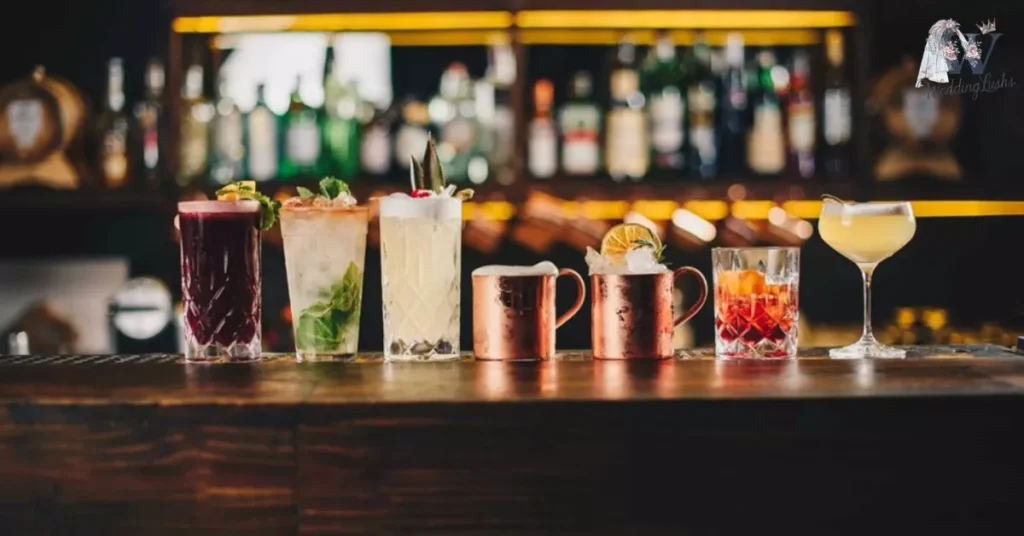
A limited open bar provides guests with a selection of specific drinks, usually including just beer, wine, and a few predetermined cocktails. This option is popular for balancing cost and variety while still offering an enjoyable experience. It’s often chosen for events with budget constraints or where simplicity is preferred.
Cash Bar Hybrid
A cash bar hybrid combines elements of both an open bar and a cash bar, where the host covers the cost of certain drinks or during specific times, while guests pay for others. This option helps balance budget concerns while still offering complimentary beverages. It’s a popular choice for events with varying guest preferences.
Beer and Wine Open Bar
A Beer and Wine Open Bar offers guests a selection limited to beer and wine, making it a more budget-friendly option compared to a full bar. This setup provides simplicity while still catering to diverse tastes. It’s a popular choice for events aiming for a relaxed atmosphere.
Signature Cocktail Bar
A Signature Cocktail Bar features a curated selection of custom drinks designed specifically for an event, often reflecting the theme or the host’s preferences. It adds a personalized touch to the bar experience while controlling costs and maintaining a focused drink menu. This type of bar is popular at weddings and upscale gatherings.
Open Bar Etiquette
Open bar etiquette involves knowing how to behave responsibly when drinks are provided at no cost. Guests should avoid excessive drinking and be mindful of their behavior, as an open bar is a privilege rather than a right. It’s important to drink in moderation and respect the venue’s policies and staff.
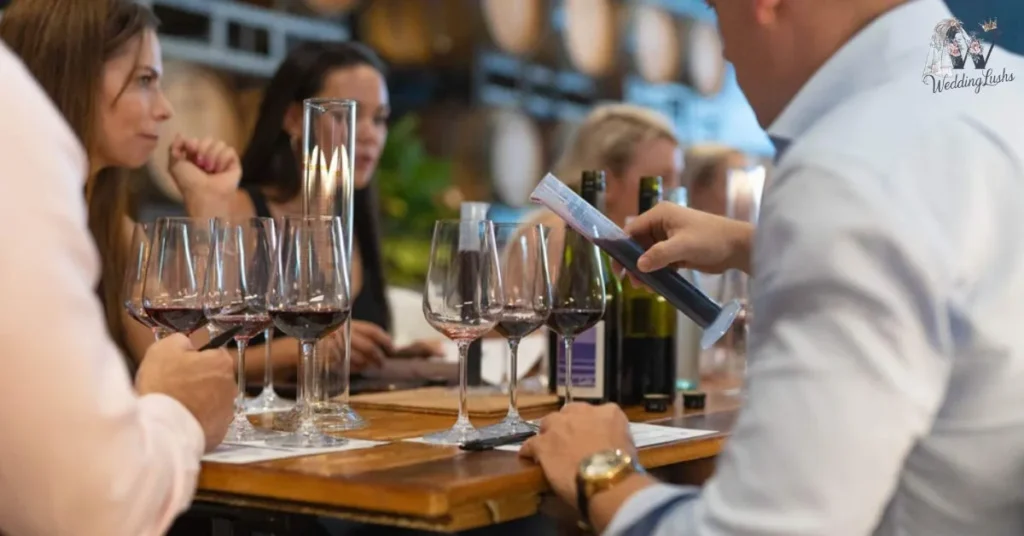
Always be polite to bartenders, tip them appropriately, and avoid placing multiple drink orders at once. If you’re unsure about what to order, ask for recommendations rather than making unreasonable requests. Remember that responsible drinking ensures everyone has an enjoyable time and maintains a positive atmosphere at the event.
Cost Considerations For An Open Bar
When planning an open bar, it’s crucial to consider the overall cost, which can vary significantly based on the number of guests and the type of drinks served. Full open bars, offering a wide range of premium liquors, wines, and beers, generally come at a higher expense compared to limited bars that offer fewer options. The choice of alcoholic beverages also impacts the cost, with high-end spirits and specialty cocktails increasing the total price.
Additional factors include the duration of the open bar and any potential extra charges for staffing or rental of bar equipment. To manage costs, consider offering a limited selection of drinks or a cash bar for certain items. Proper budgeting and planning can ensure that the open bar fits within your event’s financial constraints while still providing a memorable experience for guests.
Pros And Cons Of Offering An Open Bar
Offering an open bar can enhance the guest experience by providing free access to drinks, which often leads to a more festive and enjoyable atmosphere. It simplifies event planning, as guests don’t need to worry about paying for their beverages, and it can encourage guests to mingle and socialize more freely. Additionally, an open bar can be a major draw for attendees, making the event more memorable and potentially increasing attendance.
However, there are drawbacks to consider. The cost of an open bar can be significant, potentially stretching the event budget. It might also lead to excessive drinking, which could result in disruptive behavior or increased liability for the host. Furthermore, managing an open bar requires careful planning to ensure the right balance of alcoholic and non-alcoholic options, and to prevent over-serving guests.
Popular Drinks At An Open Bar
Popular drinks at an open bar often include classic cocktails like martinis and margaritas, along with standard options such as beer and wine. Signature cocktails tailored to the event’s theme can also be a highlight. Non-alcoholic beverages like mocktails and soft drinks ensure all guests have choices.
Classic Cocktails
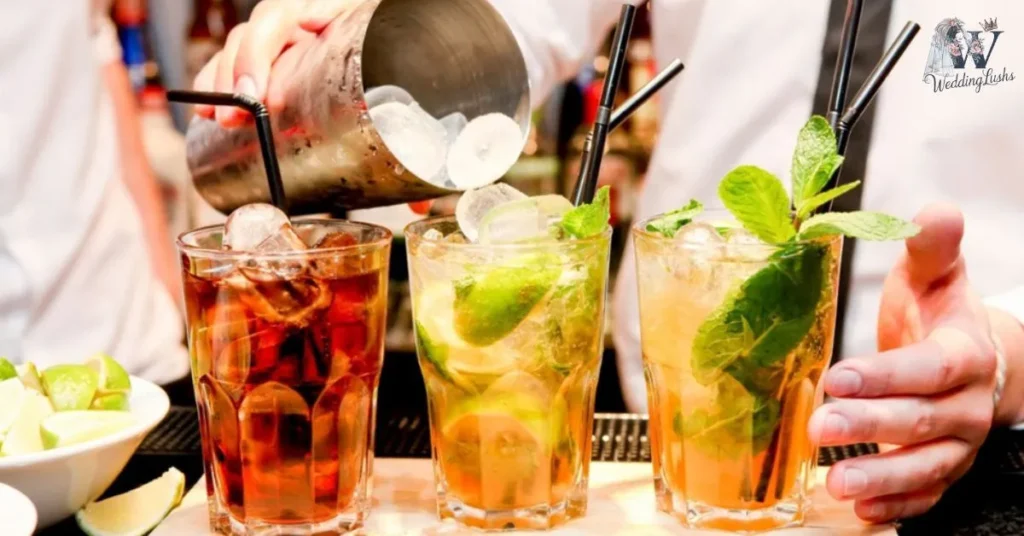
Classic cocktails, such as martinis, mojitos, and old fashioneds, are timeless favorites at open bars. They offer a blend of simplicity and elegance that appeals to a wide range of tastes. These drinks are often staples because of their proven popularity and ease of preparation.
Popular Beer Selections
Popular beer selections at an open bar typically include mainstream favorites like lagers and ales, along with craft options for variety. IPA and stout varieties often appeal to beer enthusiasts. Including a mix of domestic and international brands can cater to diverse preferences.
Varieties of Wine
Varieties of wine at an open bar typically include popular choices like red, white, and rosé. Each type can be further segmented into specific varietals, such as Cabernet Sauvignon, Chardonnay, and Pinot Noir. Offering a range of wine options caters to different taste preferences and enhances the guest experience.
Mocktails and Non-Alcoholic Options
Mocktails and non-alcoholic options offer refreshing alternatives for guests who prefer not to drink alcohol, with creative blends that mimic traditional cocktails. They provide inclusive choices for all attendees and can enhance the overall event experience. These options also ensure that everyone can enjoy flavorful beverages while staying sober.
Seasonal Drink Choices
Seasonal drink choices add a festive touch to an open bar, featuring ingredients and flavors that match the time of year. For example, summer might include refreshing mojitos and sangrias, while winter could offer spiced mulled wine and hot toddies. These drinks enhance the overall theme and atmosphere of the event.
Alternatives To An Open Bar
Alternatives to an open bar can offer cost-effective and varied options for events. A cash bar allows guests to pay for their own drinks, which can significantly reduce the host’s expenses while still providing a selection of beverages. Another option is a limited bar, where the host covers a set number of drinks or offers a restricted menu, such as only beer and wine or a few specialty cocktails.
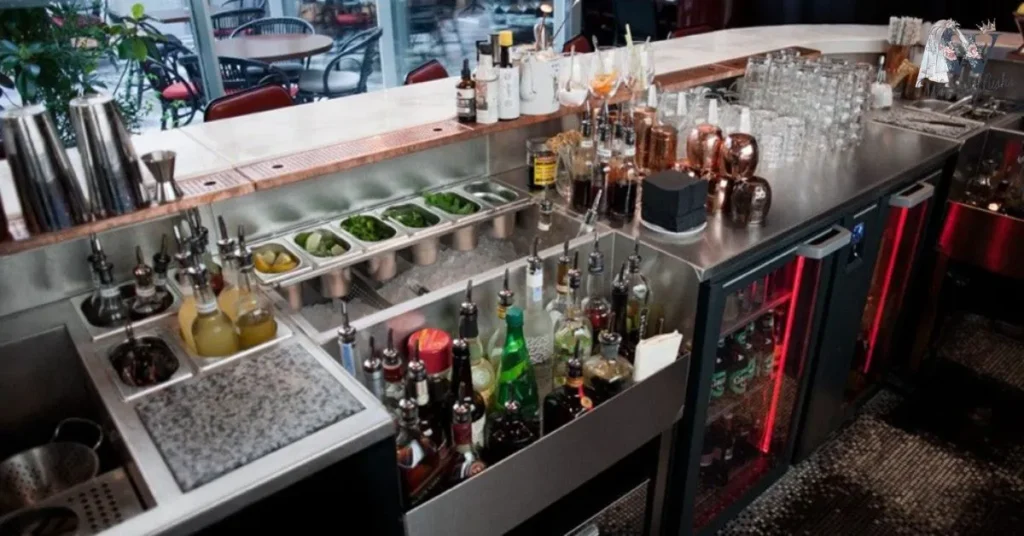
Additionally, a drink ticket system can control spending by giving guests a certain number of tickets redeemable for drinks. A dry event, where no alcohol is served, can be a considerate choice for various reasons, including budget constraints or cultural preferences. Non-alcoholic beverage bars, featuring mocktails, juices, and sodas, can also offer a festive alternative without the cost of alcohol.
Cultural Differences In Open Bar Practices
Cultural differences significantly influence open bar practices at events. In some countries, such as the United States, an open bar is a common feature at weddings and corporate functions, often seen as a standard offering. In contrast, other cultures might prefer a more modest approach, with guests paying for their drinks or having a limited selection available. For example, in many European countries, it’s typical to have a cash bar or a limited open bar with a focus on wine and beer.
Additionally, the approach to drinking and socializing can vary widely. In some cultures, a full open bar might be expected as part of the hospitality experience, while in others, there is a stronger emphasis on moderation and traditional customs. Understanding these cultural nuances helps in planning events that respect and align with local customs and expectations.
Legal Implications Of An Open Bar
Legal implications of an open bar include the host’s responsibility for ensuring guests drink responsibly and do not drive under the influence. Liability insurance might be required to cover any incidents related to excessive drinking. Local regulations and alcohol laws also need to be considered to ensure compliance and avoid legal issues.
- Responsibility for Guest Behavior: Hosts must ensure guests do not drink excessively or drive under the influence.
- Liability Insurance: Securing liability insurance is often necessary to cover potential incidents related to alcohol consumption.
- Local Alcohol Laws: Compliance with local alcohol regulations and licensing requirements is essential to avoid legal penalties.
- Age Verification: Ensuring that only guests of legal drinking age are served alcohol is crucial.
- Event Permits: Some locations may require special permits for serving alcohol at events.
- Designated Drivers: Providing options or arrangements for safe transportation home can reduce liability and ensure guest safety.
Budgeting For An Open Bar At Events
Budgeting for an open bar at events involves calculating the total cost based on the number of guests and the type of drinks offered. Start by estimating the quantity of alcohol needed and choose between a full or limited bar to control expenses. Consider including both high-end and standard options to balance quality and cost.
Additionally, account for staffing needs, as professional bartenders may be required to manage the bar effectively. Factor in taxes, gratuities, and potential overage costs to avoid surprises. Planning ahead and consulting with beverage suppliers can help create a realistic budget and ensure a smooth event.
Drawbacks Of An Open Bar
One major drawback of an open bar is the significant cost, which can strain event budgets. Additionally, there is a risk of guests consuming excessive amounts of alcohol, potentially leading to disruptive behavior and safety concerns. Managing an open bar also requires careful planning to balance drink options and prevent waste.
Furthermore, the potential for over-serving can increase liability for the host, making it essential to implement measures to ensure responsible drinking. It may also require additional staff and resources to monitor and manage effectively, adding to the overall expense. Considering these factors is crucial for a well-planned and successful event.
Setting Up An Open Bar
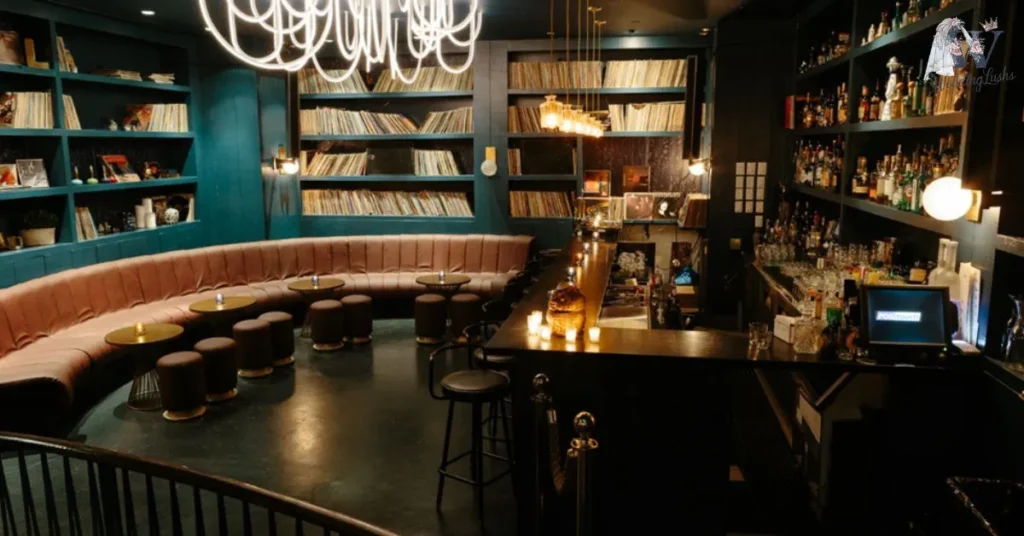
Setting up an open bar involves selecting a variety of alcoholic and non-alcoholic beverages to meet guests’ preferences. Ensure you have enough glassware, ice, and mixers to accommodate the expected number of attendees. Hiring experienced bartenders can help manage the flow and ensure a smooth operation throughout the event.
Selecting Beverages for an Open Bar
Selecting beverages for an open bar involves choosing a diverse range of alcoholic drinks, including popular spirits, wines, and beers, to cater to different tastes. Consider including a few signature cocktails to add a unique touch to the event. Also, provide a variety of non-alcoholic options to ensure all guests have choices.
Determining Glassware and Supplies
Selecting beverages for an open bar involves choosing a mix of popular alcoholic drinks and non-alcoholic options to cater to all guests. Consider including a range of spirits, wines, and beers, as well as mixers and garnishes. Tailoring the selection to the event’s theme and guests’ preferences ensures a well-received and enjoyable experience.
Hiring and Training Bartenders
Hiring experienced bartenders ensures efficient service and professional handling of drink orders at your event. Training them on the specific drink menu and event policies helps maintain consistency and guest satisfaction. Providing clear instructions on managing alcohol responsibly can prevent potential issues and enhance the overall experience.
Organizing Beverage Stations
Organizing beverage stations involves strategically placing drink stations to ensure easy access and flow for guests. It’s essential to set up areas for alcoholic beverages, mixers, and non-alcoholic options separately to streamline service and reduce wait times.
Managing Inventory and Stock Levels
Managing inventory and stock levels involves tracking the quantity of beverages to ensure there’s enough for all guests while minimizing waste. Regularly checking and replenishing supplies helps maintain a smooth operation and prevents shortages during the event.
Managing An Open Bar
Managing an open bar requires careful coordination to ensure guests are served efficiently and responsibly. This includes monitoring alcohol consumption to prevent over-serving and ensuring a balanced selection of drinks.
Effective management also involves staffing the bar with experienced professionals who can handle high volumes and maintain a positive atmosphere. Regularly checking inventory and replenishing supplies helps avoid shortages and keeps the bar running smoothly throughout the event.
Guest Reactions To Open Bars
Guests generally react positively to open bars, appreciating the convenience of free drinks and a wider selection of beverages. It often enhances the overall enjoyment of the event, encouraging mingling and creating a lively atmosphere.
However, some guests might feel uncomfortable with excessive drinking or the pressure to consume more than they would typically. Proper management and moderation are key to ensuring a positive experience for everyone.
Final Words
An open bar can significantly enhance the guest experience at an event by providing free access to a variety of drinks, creating a more relaxed and enjoyable atmosphere. It encourages social interaction and adds a touch of luxury, making the event more memorable. However, careful planning and budgeting are crucial to manage the associated costs and prevent potential issues such as excessive drinking or logistical challenges.
Balancing the benefits with the drawbacks involves selecting the right type of bar, monitoring inventory, and implementing responsible serving practices. By considering factors such as local regulations, cultural differences, and guest preferences, hosts can create a well-organized and enjoyable event. Ultimately, thoughtful preparation ensures that the open bar enhances rather than detracts from the overall experience, leaving guests satisfied and contributing to the event’s success.
Frequently Asked Questions
What is an open bar?
An open bar provides guests with free access to alcoholic and non-alcoholic beverages during an event, with the host covering the costs.
How do I budget for an open bar?
Budgeting involves estimating the number of guests, selecting drink options, and accounting for costs like staffing and supplies.
What are the benefits of an open bar?
Benefits include increased guest satisfaction, a festive atmosphere, and easier socialization among attendees.
What are some alternatives to an open bar?
Alternatives include cash bars, limited bars with a set selection, or offering a few complimentary drinks per guest.
How can I manage an open bar effectively?
Effective management includes hiring professional bartenders, monitoring inventory levels, and ensuring responsible alcohol service.
